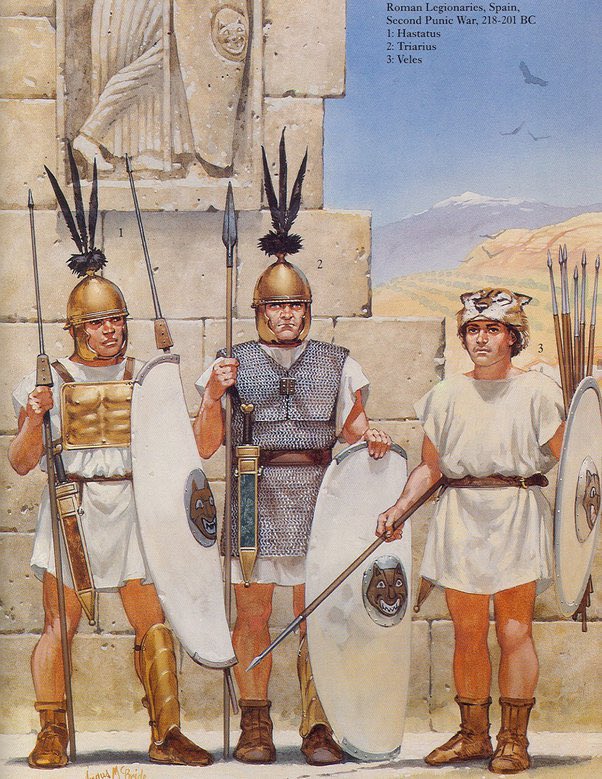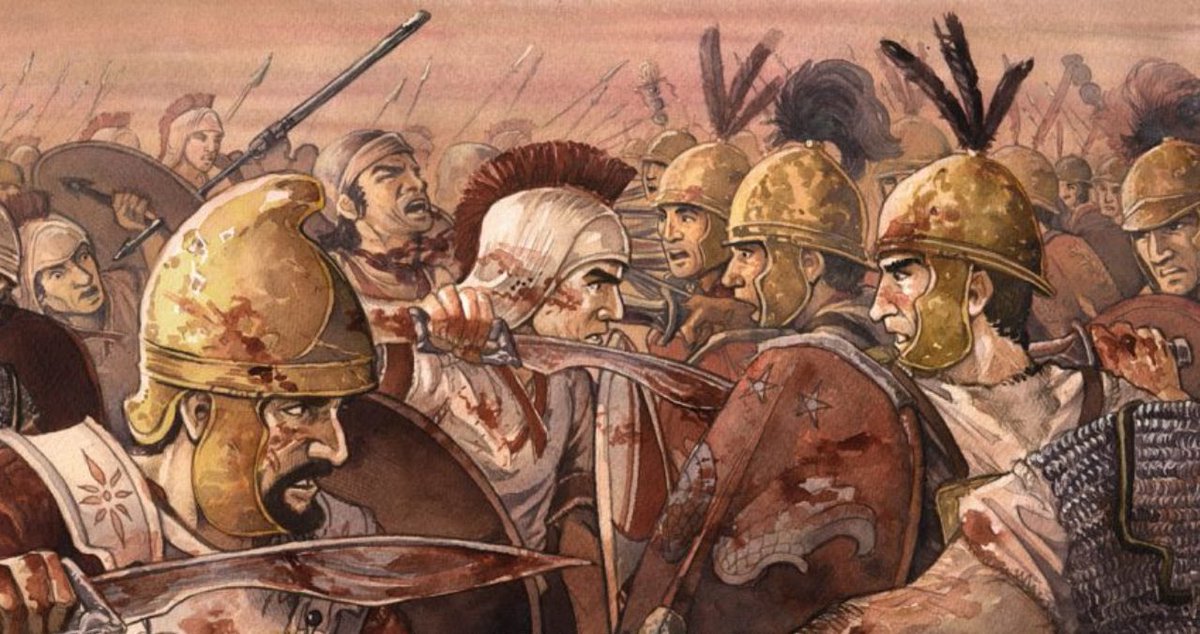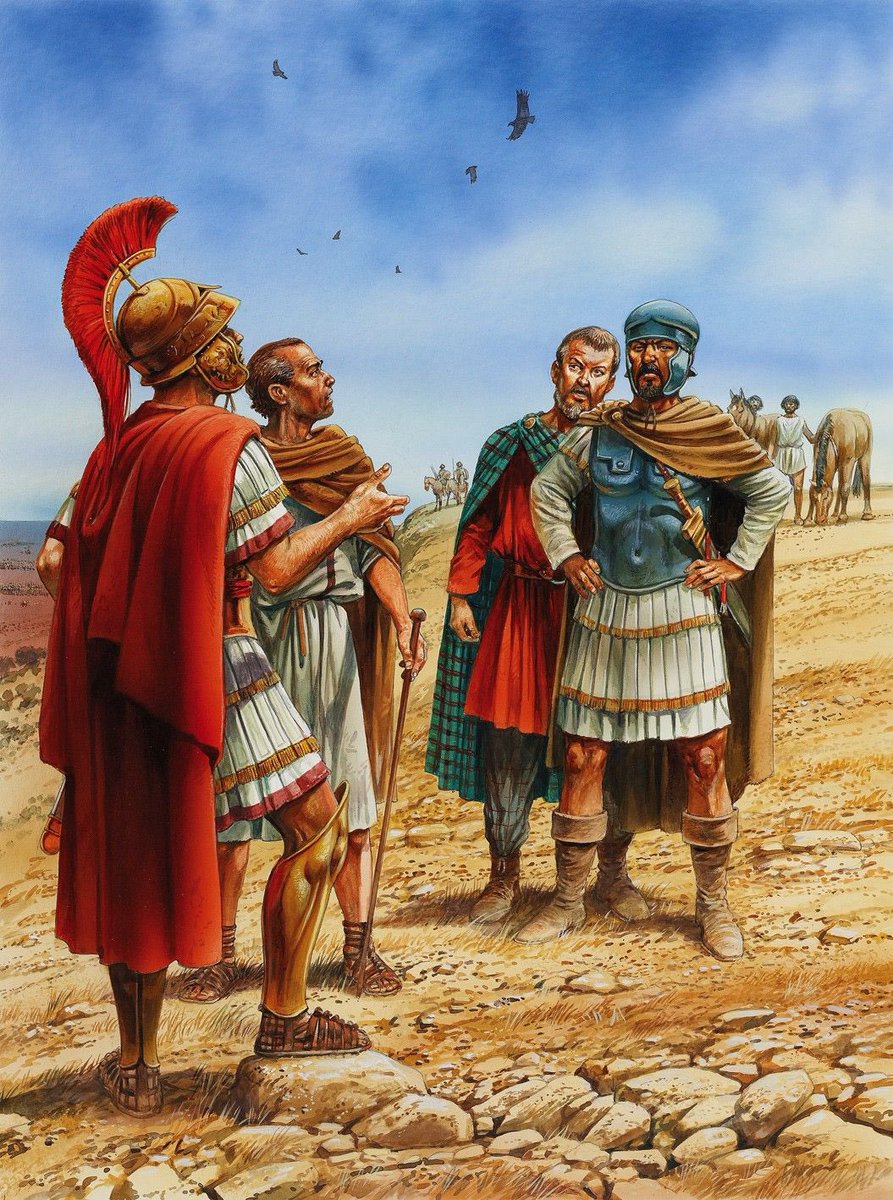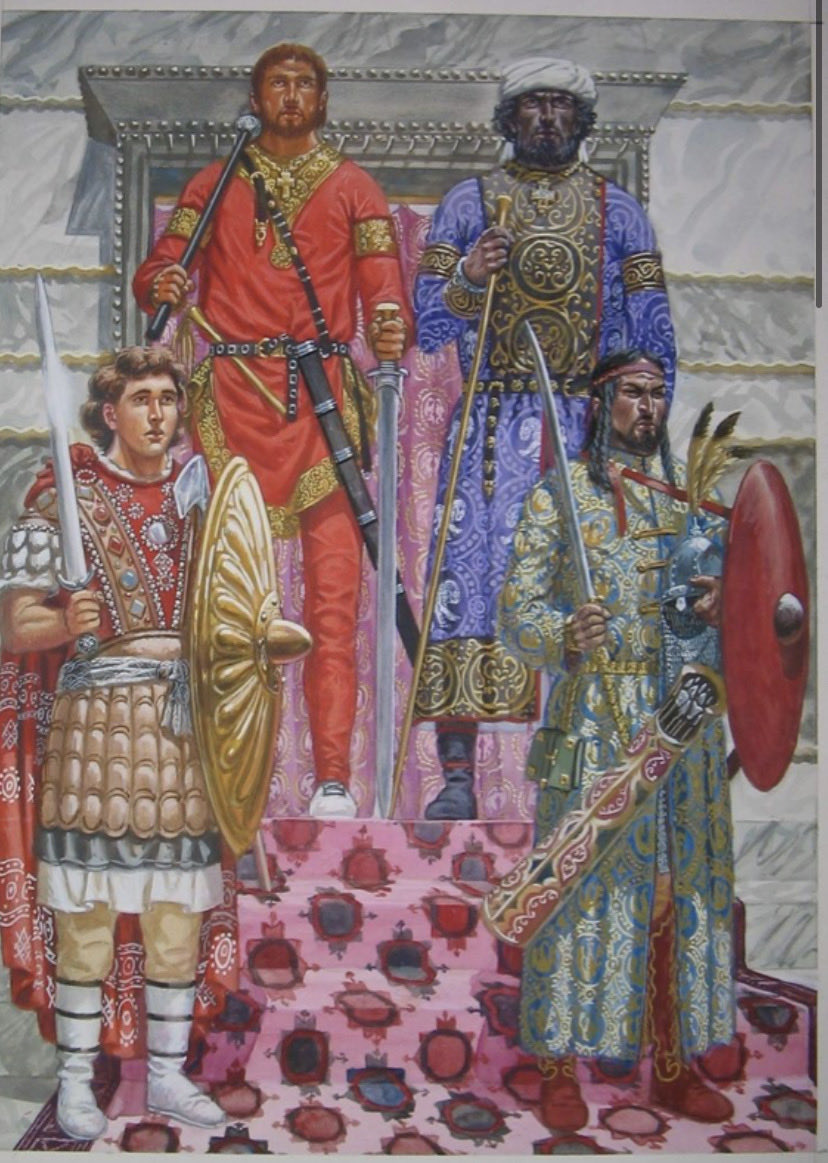Today, 2,239 years ago, Hannibal Barca met the Roman army on the plains near Cannae. Outnumbered & deep behind enemy lines, Hannibal displayed his unmatched tactical genius, annihilating the Roman army at the bloodiest day in military history until World War One. 

In the 3rd Century BC, the dominant Carthaginians & the rising Roman Republic fought a series of wars for control of the Western Mediterranean. This titanic struggle, named The Punic Wars, spanned decades & set Rome on the path to superpower status. 

Carthage, after losing the First Punic War, turned to Iberia to recover its lost fortunes. The Barca family, discovering massive silver deposits & conquering much of the peninsula, helped solidify their power & rejuvenate Carthaginian fortunes. This made Rome uneasy. 

Rome took the Greek colony of Saguntum in modern day Spain under its protection. Hannibal, refusing Rome’s attempt to arrest Punic expansion, sacked the town. The Romans duly declared war and prepared to invade Spain & Africa, positioning their armies west & south. 

Hannibal, outnumbered, knew he needed to act boldly. In one of the greatest military maneuvers in history, Hannibal marched his army through the Alps & into the unguarded rear of the Romans, collecting Gallic allies as he went. Roman armies were thrown at Hannibal in a panic. 

Hannibal crushed two Roman armies at Trebia & Lake Trasimene, devastating the Romans & opening the way to central & southern Italy. The Romans, hysterical, elected Quintus Fabius Maximus as dictator. Fabius adopted his namesake “Fabian strategy.” 

Fabius denied Hannibal battle & relied on low-intensity harassment to wear down Hannibal until the Romans could recover from their losses. The Romans grew frustrated watching Hannibal ravage Italy unopposed, leveling their villas & farms, deriding Fabius as “the Delayer.” 

Fabius was replaced by the Varro & Paulus in 216 BC. The consuls promised an effective & aggressive strategy to crush Hannibal & raised an army of 86,000 men, the largest yet in Roman history. The Romans marched to Cannae in Apulia, where Hannibal had seized a key supply depot. 

Observing Roman law, the consuls alternated in command. Traditionally, the sources point to Varro being eager for battle while Paulus was more cautious, but this might be a bias in the sources as Paulus’s aristocratic background encouraged the rehabilitation of his character. 

On the 2nd of August, 216 BC, after some days of skirmishing, the armies arrayed themselves on the plains near the Aufidus River. The Romans packed their ranks deeper & tighter than usual, hoping to penetrate the Hannibal’s center & shatter the Carthaginians through brute force. 

Hannibal arrayed his kaleidoscopic army of Gauls, Iberians, Libyans, Numidians, & Punics brilliantly. The Iberians & Gauls formed a thin crescent in the center, flanked by Libyan & Punic heavy infantry. Hannibal’s superior Numidian & Celtic/Iberian cavalry guarded the wings. 

Hannibal positioned himself at the center of the crescent, steeling his men against the immense pressure of the Roman line. Although Hannibal only had ~50,000 men, he had 10,000 cavalry of superior quality to Rome’s 6,000. 

The battle began with Gallic/Iberian cavalry under Hannibal’s brother Hasdurbal attacking the Roman cavalry arrayed in front of them. Polybius described the struggle as “barbaric” in its brutality. Eventually, the Romans broke & fled the field. 

The skirmishers dueled briefly in the space between the armies. Soon the lumbering mass of Romans marched across the plain, shaking the ground as hundreds of thousands of sandals stepped in time. Their shields crashed against Hannibal’s center, the Gauls slowly being pushed back. 

Hannibal maintained order under the tremendous pressure, his lines bending backward until the crescent reformed with the Romans in the middle. Meanwhile, Hasdrubal’s cavalry rode to the aid of the Numidians, routing the Roman allied cavalry they had been locked in battle with. 

As Hannibal’s center bent back they drew the Romans inward, collapsing their lines. Many believe the brilliance of this strategy was in surrounding the Romans, but this is an oversimplification. Hannibal’s success at Cannae benefitted from his brilliant understanding of geometry. 

As @bazaarofwar masterfully laid out in this thread, Hannibal’s arced lines forced the Romans to turn inward and all orient to the center of Hannibal’s line. As Hannibal withdrew the Romans continued to march to the center, jostling into a smaller & smaller space.
https://twitter.com/bazaarofwar/status/1366774210568146950
As the center of Hannibal’s line bent back the Romans packed so tightly they could scarcely move, their shields & weapons pinned to their sides. Now Hannibal sprung his trap. His center gave no more ground & his Punic heavy infantry pressed the Roman maniples at the flanks. 

Soon the cavalry returned & crashed into the rear of the Roman infantry, sealing the only escape. Hannibal’s men went to work on the ragged edges of the Roman lines, killing the trapped men at leisure. Skirmishers threw javelins, spears, rocks, into the packed mass of men. 

Imagine what these Romans experienced in this slaughter. Sweating under a broiling bronze helmet, parched from thirst & packed shoulder to shoulder. The crush of bodies leaving you gasping for breath in the dusty air. Confusion turns to panic as the din of battle draws near. 

Spears & rocks rain onto you & your comrades. Some suffocate under the crush of bodies, others commit mutual suicide. Hannibal’s veterans take their time dispatching their prey. Exhaustion & slippery piles of bodies & refuse drag their work well into the evening. 

As the Sun slipped below the reddened horizon, Hannibal regrouped his men on the corpse-covered plain. Paulus fell in battle, but Varro managed to escape the slaughter. Livy states that 67,500 Romans were killed & 19,300 captured. Hannibal only lost ~5,000 men. 

When news reached Rome of the defeat, wailing echoed across the city. A national day of mourning was announced, as there was no one spared from loss. In desperation, people were buried alive under the Forum & a baby drowned in the Adriatic as a sacrifice to the gods. 

In the first 20 months of the Second Punic War, Hannibal had killed 20% of Roman adult males, an astounding figure. With the defeat at Cannae, many Roman allies defected to Carthage, worsening Rome’s crisis. 

Marharbal, the commander of Hannibal’s Numidian cavalry urged the general to press his advantage & march on the undefended Rome. When Hannibal opted to send a peace delegation, Marharbal remarked, “You know how to conquer, but you don’t know how to make use of your victory.” 

Despite the bleakness of the situation, the Roman people continued to resist against all odds, refusing to recall the armies in Spain & raising even more legions to fight Hannibal & their traitorous allies. 

In a twist of fate, Paulus’s son-in-law, Publius Scipio, survived the massacre at Cannae & later revenged his people against Hannibal, defeating Carthage’s greatest general at Zama in 202 BC, winning the war for Rome & rocketing the nascent Roman state toward dominance. 

The magnitude of this tactical victory remains almost unique in all of military history. For thousands of years Cannae has stood as the measuring stick of overwhelming tactical victory (or defeat), and immortalized Hannibal’s brilliance & Roman grit in continued resistance. 

• • •
Missing some Tweet in this thread? You can try to
force a refresh



















